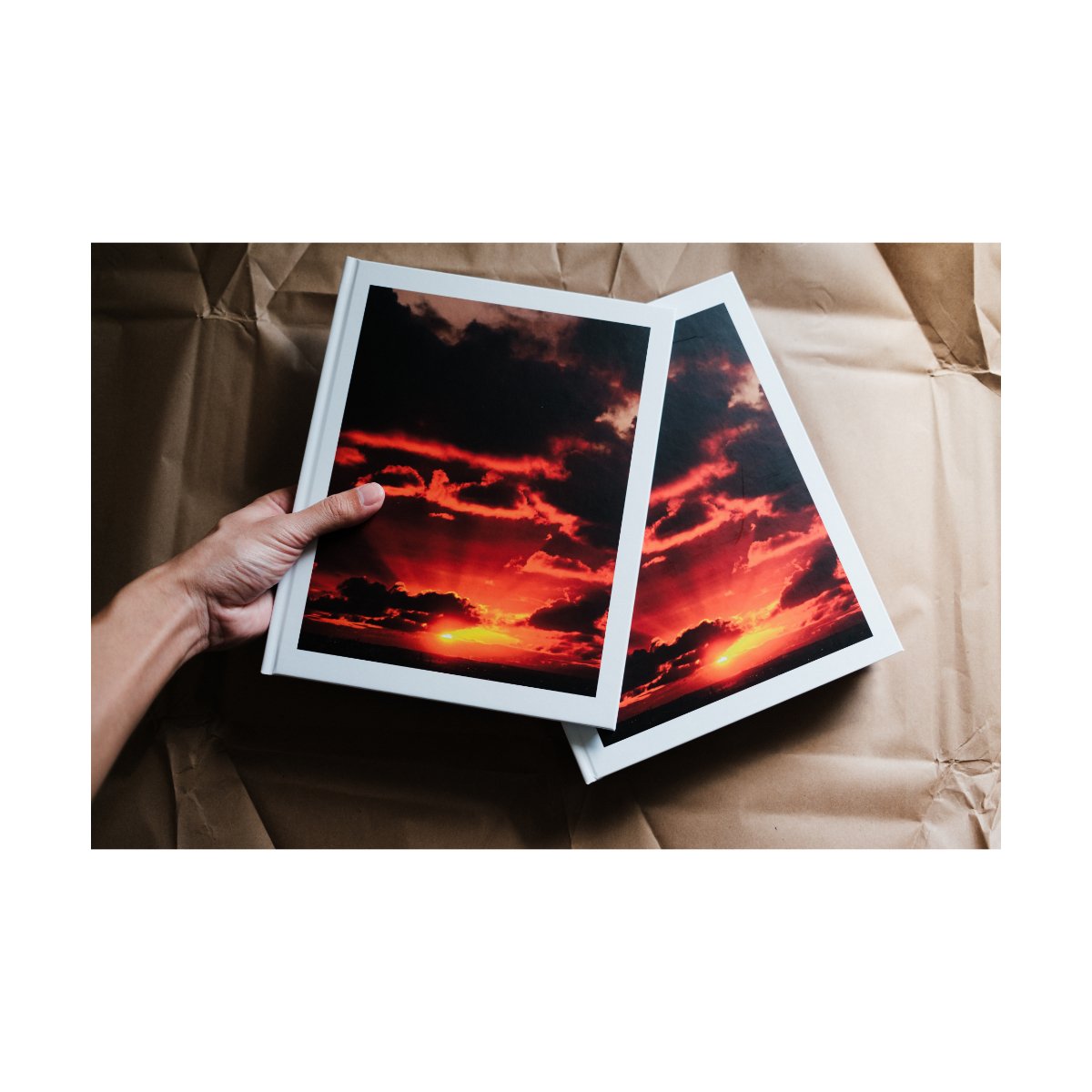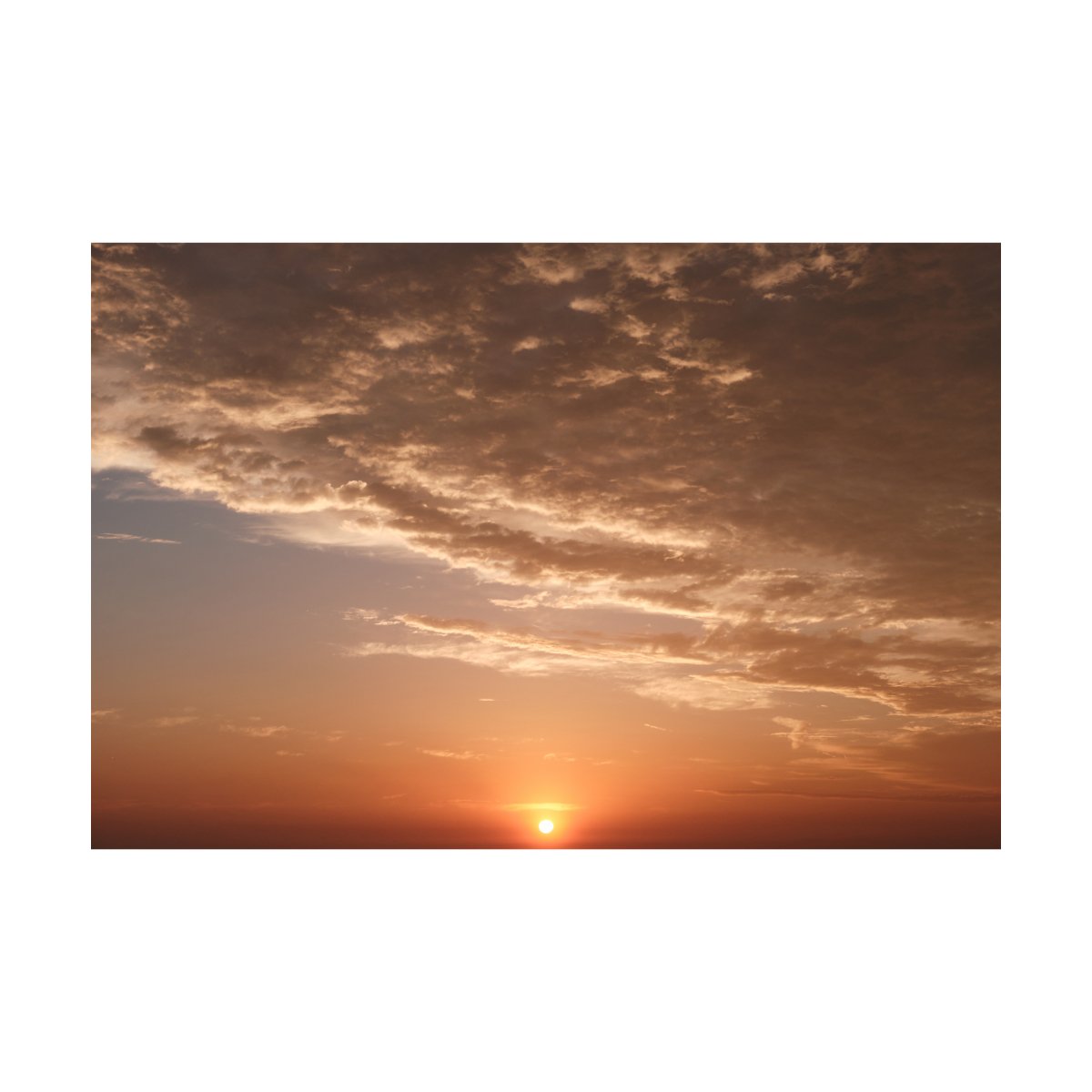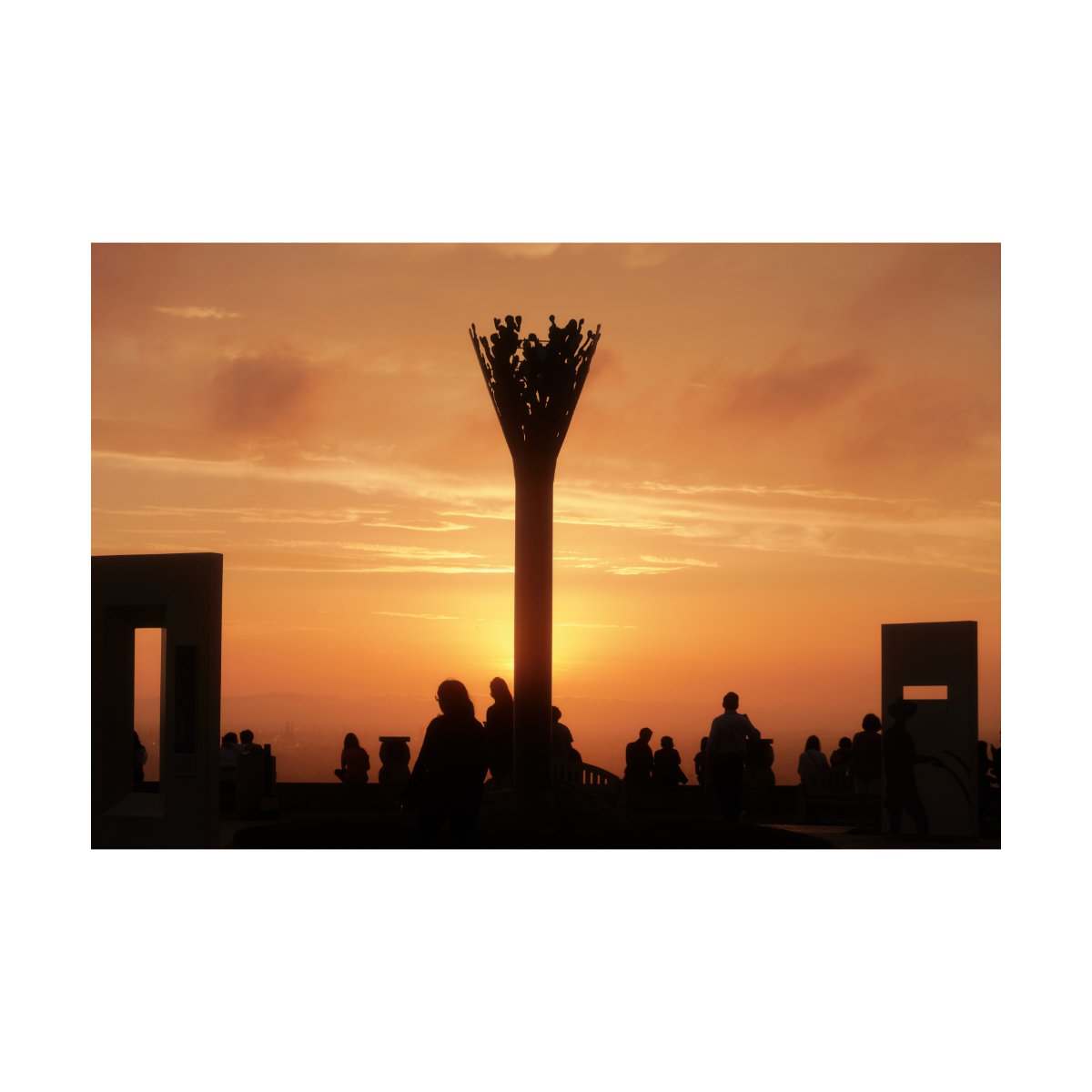A Full Flipthrough of My First Photography Zine, 1 Year Later
*for the full flipthrough, watch the YouTube video in the link above
This is my first public photography zine “The Sinking Sun”.
It’s been a little over a year since I released it, and today we’re going to flip through it, share with you the thought process behind, and see how I feel about it now.
If you’re looking to make your own photography projects in the future, this can be a great way to understand the creative process behind it.
I’m not gonna break down every single little thing, because that’d be no fun.
It’d be better for you to look through, view, and interpret it yourself - that’s art right?
But I will cover some points here and there and we’ll finish with a quick flip through.
Let’s begin.
The Viewing Experience
Are hardcovers or softcover books better?
I’ve honestly found the opinions on this to be mixed.
Some people tell me they like hardcovers because they feel more legit, solid, and professional.
Others like softcovers because the delicateness, bendability, and feeling.
When I was thinking of this book, I initially imagined there to be just a softcover version.
But I understood that some people would want a hardcover, so I went with two versions: a Special Edition Hardcover and a First Edition Softcover.
Each version is limited to a small number of copies.
For the finish, I chose a matte laminate.
I find that this is softer, nicer to hold, and more pleasing of a finish.
Personally, I have an aversion to standard glossy finishes so I tend to avoid those.
The inside paper is satin - this is a semigloss paper that’s good all around for photography.
I personally think glossy can be too shiny, while matte doesn’t always get the contrast right.
So satin is a solid in-between choice.
Materials are an important factor when making a photography book.
They affect the feel and experience a viewer has when opening and flipping through it.
And sometimes this feeling can alter the impressions and understanding a viewer gets.
So if you’re thinking of making a book, order a sample pack, and take some time to understand the materials you’re using.
It affects the viewing experience more than you think.
The Most Important Image of Your Book
This is arguably the most important image of your book.
It’s the cover image - and it’s the first thing people see.
It’s not only supposed to draw viewers in, but also give a sense of what the rest of the book is about.
So often times it can be the most difficult part of making a photography zine.
For The Sinking Sun specifically, I wanted to do something different.
Most standard book layouts have the text and titles on the front which are maybe mixed in with some images.
But I thought - wouldn’t it be cool if I stuck a big large immersive sunset on the front, and had the title on the back?
This might affect whether people clicked on it or not, but I was okay with that because I thought it was a cool idea.
So that’s what I went with.
Looking back on it now, I probably could have added text or a title up in this front area, but it wasn’t what I envisioned back then.
Now, the cover photo itself was an image I took roughly 2 years ago.
And if I’m being honest, it was one of those once in a lifetime sunsets.
Because I haven’t seen anything of that proportion, intensity, and vibrance since.
The day itself had these large contrasty clouds floating in the sky, pushed by a decent but not too strong wind.
The colors were interesting as it started off flat and then the sky turned red as the sun began to set.
It felt as if there was a storm coming, and the contrast between light and shadow gave it that extra drama.
And as the sun reached the horizon line, rays of light shone through all different directions.
Probably one of the best sunsets I’ve ever witnessed.
Seriously, I might have teared up a bit.
From that photo session, I got a ton of print worthy shots like Storm/Smoke, and “Horizon”, which became this cover photo.
I felt like it was the perfect choice to be the cover of The Sinking Sun because it was dramatic, moody, and epic.
Creating a Captivating Intro
After the cover photo, a strong intro is next up in importance.
Not only should it warm the readers up, but it should also captivate them in some way.
Knowing this, I decided to start off strong, grab the readers’ attention, and try to hold it.
For this I used a montage of full bleed sunsets, each colorful and immersive in their own way.
They also preview different later chapters in the book, which have more photos from each of those individual days.
That way, as the reader reaches the later chapters, they’ll get a sense of familiarity, full circleness, and closure.
I honestly don’t know how effective this was, but that was the intent anyways.
As for each chapter, you’ll understand it more when we cover the text, themes, and flip through but just understand this:
Each chapter is meant to progress the viewer in a different way.
Chapter 1 warms viewers up and gets them acclimated to the topic.
And as you progress through the book, each chapter poses a different set of ideas, questions, thought experiments, paired with the appropriate images to develop the theme in the viewer’s head.
For example, Chapter Two is about the young and old, and the difference in how we think as we age.
“When you’re young you think you have time, when you’re old you realize you never did.”
These panels are paired with teenagers over here, a child and his father over there.
These images help get the point across and the chapter itself fuels the overall theme of “The Sinking Sun”.
And that’s how I built each chapter: with the intent to progress the story and get people to understand not only visually but through words as well.
Most Photographers Don’t Understand This
This might be one of the more challenging aspects of building a photography book.
Because as photographers, we want to just take all of our good images and throw them together and voila it’s done.
But that is the exact opposite of what we want to do when making a book.
No one wants to just flip through your portfolio.
That’s why, when making a book we need a theme.
A sort of central idea around the body of work that our images can match, add to, or revolve around.
Without this your book will have nothing holding it together, and it’ll just be a loose set of images with no point to it.
So that’s the challenge of book building and it’s a completely different skill than simply being able to take good photos.
Because once you begin brainstorming themes, you’ll quickly realize:
Not every good photo you’ve taken will match that theme.
And actually, very few of my “best images” do.
This raises the bar for your photography.
Because now you not only need to taken images that are good enough on their own, but also images that match the very thing you’re building.
And more requirements means more difficulty.
This 100% happened when I was building “The Sinking Sun”.
I thought I had a bunch of images that worked and fit - immersive sunsets and cloud formations.
But as I built the book, I realized that so many images which were good on their own - didn’t work or fit with the book.
And these images had to connect in some way or else they were just taking up retail on the pages.
So I had to cut a bunch of images I liked to keep the theme consistent, and if I didn’t have enough for a set to fill the chapter and transitions, those images were cut.
Now how do you actually go about picking a theme?
Personally, I think it can be as complex or simple as you want it to be.
You can make it about this big dramatic life changing story, or just about stuff you like taking pictures of.
For “The Sinking Sun”, I had to ask myself some important questions:
I knew I wanted to make a zine out of all these asethtetic immersive and beautiful sunsets, but why?
What was so appealing about them?
Why did I feel connected to this idea?
And what even is “The Sinking Sun”?
As I kept working on it, I discovered what I wanted to create.
The Sinking Sun is not simply about your nice looking sunset.
It’s about time, our most finite resource, and our relationship with it.
Day in and day out we spend our time in various ways.
Some people reach the end of their lives, fulfilled and happy, knowing they spent their time well.
Others, full of misery and regret, knowing they wasted a lot of it.
This idea, that nothing lasts forever, and we have to use it well is consistent throughout the book.
Through all the images, the questions, and even the experience of looking through the book.
And that’s what I believe everyone is feeling when we go out and look at a sunset.
We’re all experiencing the finiteness of life, even though we don’t know each other, even though we live different lives, we share that same feeling.
I don’t know if I was able to articulate it properly or show it well enough in my work, but that’s The Sinking Sun.
And I’m hoping that the people who did go through it, that message was communicated to them either clearly or subconsciously, and led them to start asking the bigger questions of life:
What am I going to do, who am I going to do it with, and when am I going to do it?
And when the sun sets, am I happy with how things end?
That’s theme.
1 Year Thoughts - Lessons and Takeaways
After flipping through this zine roughly 1 year later, I’m reminded of all the decisions and thoughts I had when making it.
I’m reminded of all the days I went out to take photos, the struggles, the frustrations, the back and forths between drafts, and the deleting of a lot of images.
And looking back on it, there are a few minor things I may have changed, sure.
And there are things I could have done to make it better, I guess.
But overall, this was the best I could have done given the person I was and the skill I had at the time.
And although I could arguably make a “better version” now, there are a few intangibles that could not have been changed.
That being the essence and feelings of what I was creating at the time.
Back then, I was so locked in to that time and those images and those themes.
And the me now is simply a different person.
So undoubtedly, if I made it again, it’d be a different book.
So the biggest takeaway, I guess:
is no matter how ready or unready you feel,
no matter how much better you think you can do it later,
no matter how,
make the thing now.
Art, inspiration, motivation, intent, creativity - they’re all perishable.
Meaning that regardless of skill level, there’s a transient element to whatever you’re creating that’s locked into the time and person you are when you created it.
And if you wait too long twiddling your thumbs, it won’t be there anymore.
Or maybe it’ll be there, but it’ll surface in a completely different way.
Without sounding too spiritual, because that’s not what I’m trying to do, this “creative energy” is temporary.
And you’ve got to use it while it’s here because even if the end result isn’t something perfect, there will still be those few good aspects about it that you’ll sit back and wonder later:
“How did I make that?”
And I think that’s a pretty cool feeling.
So if you’ve got something you wanna make whether it be a photography project or whatever, make it now.
It’ll be better in the time you’re thinking about it, and those feelings don’t last forever.
Which is ironically a big theme of the book.
Anyways, thanks for sitting with me through this.
If you want to grab a copy of “The Sinking Sun”, links are here.
We’re out of the pre-order 11x14 prints, but we still have softcovers and a few hardcover copies.
You’ll also get all the other little print inclusions as well.
You can also learn more and build a solid foundation with photography in Photography Essentials - check it out, it’s free.
Thanks as always for reading, see you next time.















